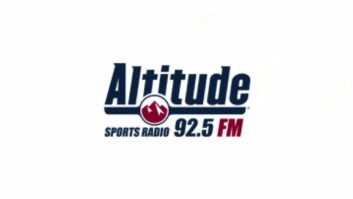WJCU-FM, Cleveland, OH
Dec 1, 2002 12:00 PM, By David E. Reese
Equipment List360 Systems Short/cut audio editor
AudioArts D-70 audio console
Audio-Technica AT4033a microphone
Burk ARC-16 remote control system
Crown D-75 monitor amp
Denon DN720R cassette recorder
Denon DN-C630 CD player
ESE ES192AP master clock
JBL 4408 monitor speakers
Koss K-66 headphones
OZ Audio HR-4 headphone amp
Sage EAS Endec
Shure SM7 microphone
Sony CDR-W33 CD recorder
Sony MDS-E11 mini-disc recorder
Symetrix 528E mic processor
Symetrix 610 broadcast audio delay
Tascam DA-30 DAT recorder

If you’re driving through Cleveland and your radio dial makes it to the left-hand side, at 88.7 you’ll hear WJCU – the student-operated radio station at John Carroll University, a Jesuit university. The 850W FM station�s eclectic programming mix centers on various rock formats and attracts listeners throughout the market and especially in the eastern suburbs. Like many radio facilities, for the past several years, WJCU has been replacing analog equipment with its digital counterpart. For example, ITC cart machines became Denon DNM991R mini-disc recorders and later Sony MDS-E11 mini-discs. A workhorse Otari reel-to-reel was replaced with a 360 Systems Short/cut personal audio editor and a computer system with Cool Edit Pro was added to the traditional broadcast equipment mix.
The on-air control room
Recently WJCU completed a major step in its digital transition by installing a new on-air studio audio console. The production room had received a similar update the previous summer. In both rooms, the studio furniture was custom constructed by Studio Technology a few years back. For production, the room was intended as a sit-down operation, but the on-air studio was designed for a stand-up announcer with the counter top set at an appropriate height and stools, rather than chairs, for the announcer and guests.
The heart of both studios is an AudioArts D70 digital console flanked by rack modules to house the basic studio equipment. The D70 consoles were selected after some brainstorming with Cornelius Gould (a Cleveland senior staff engineer with Infinity Broadcasting, who was also an engineer at our station for a number of years) and Mark Kreiger (a Cleveland consulting engineer and regular contributor to Radio magazine). We needed a flexible console that would give us a digital structure, but also handle the few analog inputs we would still have. It also made sense to put the same console in both studios, so we could train beginning broadcasters in the off-air room while more experienced students were on-air in the main studio. Of course, we wanted a console that student operators would have no trouble handling and we needed to find an affordable console, but one that gave us quality and durability to keep our maintenance costs at a minimum. The AudioArts console seemed to offer us just what we were looking for. Getting the 20-channel mainframe allowed us to primarily assign a single piece of equipment to each channel and still offer some room for future expansion.

The production room
The equipment module to the right of the audio console holds Symetrix 528E mic processors for the three studio microphones. The main announcer mic is an AT4033a condenser while the guest mics are identical Shure SM7s. Two mini-disc recorders in this cabinet are the Sony MDS-E11 units. In addition to a Burk ARC-16 remote control, this module is filled out with two pieces of equipment for digital recording – a Sony CDR-W33 CD recorder and a Tascam DA-30 DAT. The left side module chiefly holds three CD players – the Denon DN-C630 model – that we’ve found to provide a nice compromise between price and durability. Other equipment in this module includes a Sage EAS Endec, Symetrix 610 broadcast audio delay, and an ESE clock/timer.
Farther to the left are two counter-top Technics SL1200MKII turntables. Like many radio operations, these see less and less use, but being a multi-formatted college station, it�s hard to justify getting rid of them entirely and even dropping down to one hasn�t yet been possible. Also in the studio, is a rolling equipment rack that holds a Denon DN720R cassette recorder along with miscellaneous audio distribution equipment, an Associated Press receiver and some CD storage. Beneath the U-shaped counter to the left side is a 360 Systems audio editor. It�s on a slide-out rack, but this may not be its final location in the studio as we�re finding this setup doesn�t always provide easy operation. Under the counter to the right is an OZ Audio HR-4 headphone amp for the guest headsets. We often use Koss K-66 headphones as a fairly inexpensive headset that we know we�ll need to replace on a regular basis. That usually means new headphones each semester, but we do try to keep one working announcer and guest headphone in each studio at all times. There is also a Crown D-75 amp under this counter to drive our JBL 4408 studio monitor speakers.
All in all, it’s proven to be a nicely configured studio that provides a user-friendly environment for our student staff. With the studios complete and the recent FCC selection of IBOC broadcast technology, the next step is to look at digital transmission for WJCU, but that’s a story to look at later.
Reese is general manager of WJCU and an adjunct assistant professor in the Communications Department at John Carroll University.












